Dahl Coin Collection
-
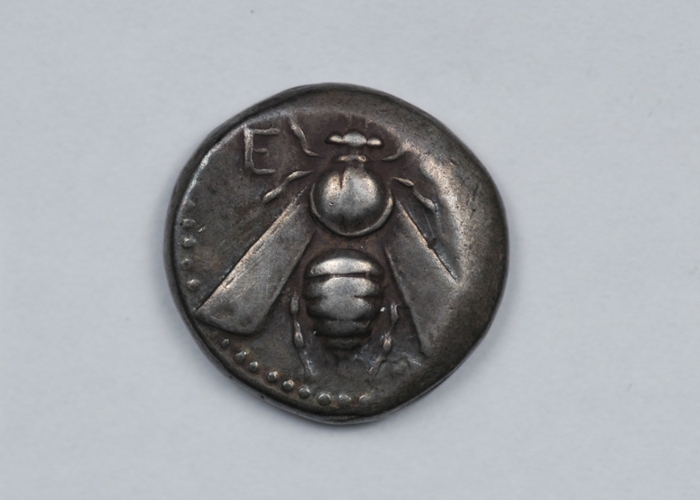
Silver Tetradrachm of Ephesus
2003.1.11
Ephesus, ca. 387 - 295 BCE
Bee/Stag
15.10 g; 23.5 mmThe city of Ephesus was located on the western coast of what is now Turkey, and its ruins can still be visited today. It was home to the famous Temple of Artemis, one of the Seven Wonders of the Ancient World.
The images on this coin reference worship of Artemis. The stag was sacred to the goddess of the hunt, and her priestesses at the temple were referred to as "melissae," or "bees." Nymphs in the form of bees were said to have guided colonists from Attica who founded the city in the 10th century BCE.
-
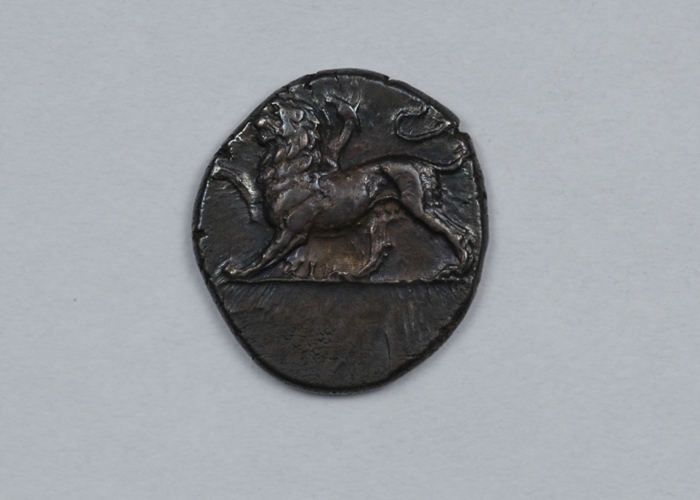
Silver Hemidrachm of Sikyon
2003.1.9
Sikyon, ca. 360 - 330 BCE
Chimera/Dove
2.88 g; 17.1 mmSikyon was located on the Peloponnesus in southern Greece, near Corinth. At the time this coin was struck, the city was known as a center of the arts. Several famous Classical painters and sculptors hailed from Sikyon, including Lysippos, personal sculptor to Alexander the Great.
Sikyon's coinage features the striking juxtaposition of a dove and a monster, the mythical chimera. Part-lion, part-goat, and part-serpent, the fire-breathing chimera was said to have terrorized ancient Lycia (on the southern coast of what is now Turkey) until it was slain by the hero Bellerophon. Bellerophon was only able to defeat the monster with the aid of Pegasus and the goddess Athena, who told him how to find and tame the flying horse.
-
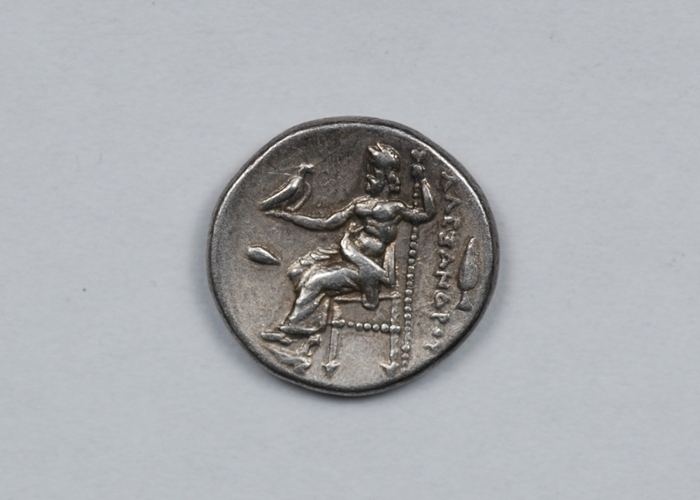
Silver Drachm of Alexander the Great
2003.1.4
Sikyon, ca. 360 - 330 BCE
Chimera/Dove
2.88 g; 17.1 mmSikyon was located on the Peloponnesus in southern Greece, near Corinth. At the time this coin was struck, the city was known as a center of the arts. Several famous Classical painters and sculptors hailed from Sikyon, including Lysippos, personal sculptor to Alexander the Great.
Sikyon's coinage features the striking juxtaposition of a dove and a monster, the mythical chimera. Part-lion, part-goat, and part-serpent, the fire-breathing chimera was said to have terrorized ancient Lycia (on the southern coast of what is now Turkey) until it was slain by the hero Bellerophon. Bellerophon was only able to defeat the monster with the aid of Pegasus and the goddess Athena, who told him how to find and tame the flying horse.
-
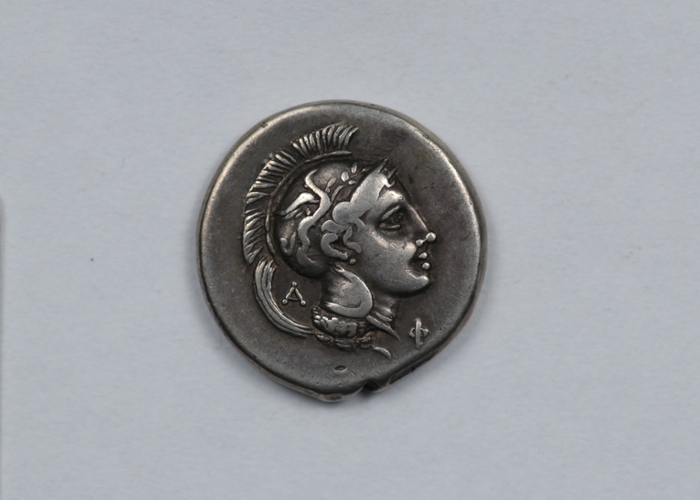
Silver Didrachm of Velia
2003.1.1
Velia, ca. 300 - 280 BCE
Athena/Lion
7.43 g; 20.3 mmVelia (Elea, in Greek) was one of the many towns founded in southern Italy by Greek colonists. It is located in present-day Campania, on the southwestern coast of Italy.
The coin's obverse depicts the goddess Athena in a helmet bearing the image of a griffin. The lion on the reverse is sometimes seen walking, as in this example, or tearing into its prey, typically a stag (or some part thereof). The small phi symbols (beneath Athena's chin on the obverse, and to the right of the dolphin on the reverse) may mark the dies used as the work of an engraver known as Philistion.
-
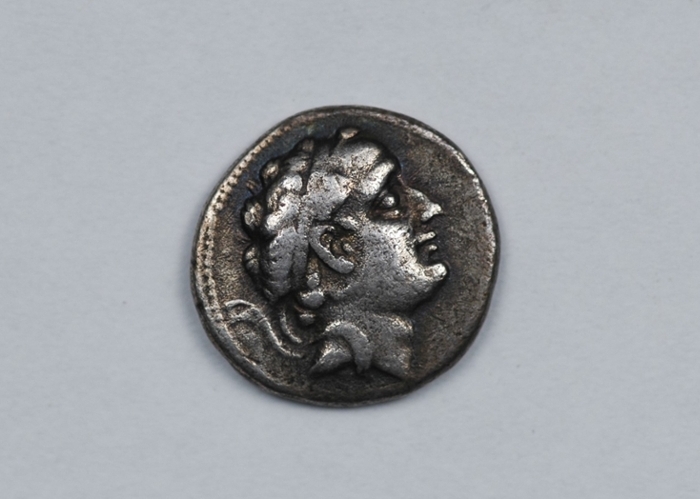
Silver Drachm of Seleukos IV
2003.1.15
Velia, ca. 300 - 280 BCE
Athena/Lion
7.43 g; 20.3 mmVelia (Elea, in Greek) was one of the many towns founded in southern Italy by Greek colonists. It is located in present-day Campania, on the southwestern coast of Italy.
The coin's obverse depicts the goddess Athena in a helmet bearing the image of a griffin. The lion on the reverse is sometimes seen walking, as in this example, or tearing into its prey, typically a stag (or some part thereof). The small phi symbols (beneath Athena's chin on the obverse, and to the right of the dolphin on the reverse) may mark the dies used as the work of an engraver known as Philistion.
-
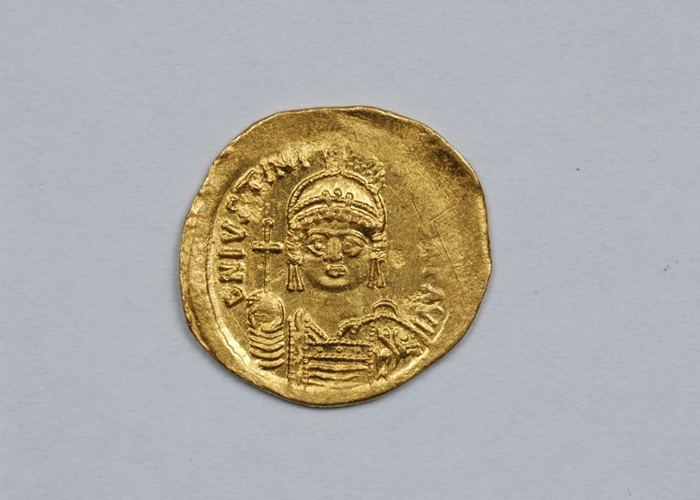
Gold Solidus of Justinian I
2003.1.227
Byzantine Empire
Constantinople mint, ca. 527 - 565 CE
Justinian I/Victory
4.45 g; 21.8 mmJustinian I was one of the first emperors to be pictured on coinage holding the globus cruciger (globe surmounted by a cross), a symbol of divine power and Christian dominance. Note too, how on the reverse the Greco-Roman winged goddess of victory is now depicted bearing explicit Christian symbols.
In the 4th century, the solidus replaced the aureus as the standard gold coin of the Roman Empire. Because gold is so easily damaged, solidi were periodically melted down and reissued to maintain a standard weight. This solidus was minted in Constantinople, the capital city of the Eastern Roman, or Byzantine, Empire. The mintmark is located on the reverse, beneath Victory's feet, in a space referred to as the exergue.
-
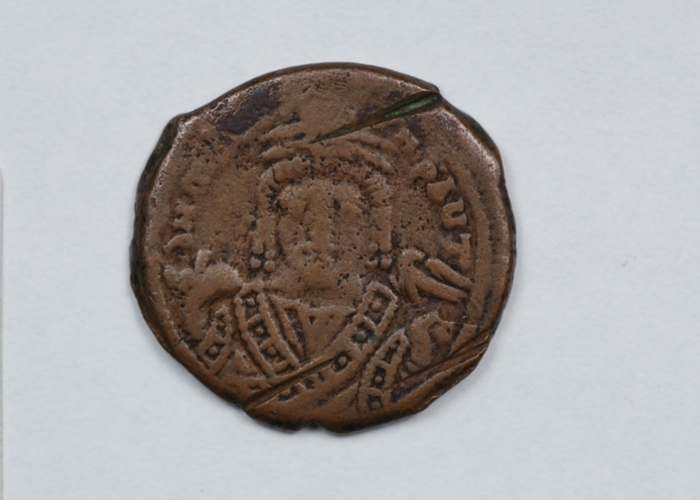
Bronze Follis of Maurice Tiberius
2003.1.229
Byzantine Empire
Antioch mint, 596/597 CE
Crowned consular bust facing/M and marks
10.49 g; 28.4 mmMaurice is credited with helping to end a decades-long war between the Byzantine and Sassanid Persian Empires through military victory and family alliance. This coin depicts him as both secular consul, by his robes, and divine emperor, by his crown. By this point in time, the office of consul had largely lapsed and been merged with the imperial identity.
It can be precisely dated thanks to the reverse, which is marked as being minted in Theopolis (Antioch) in the 15th year of Maurice Tiberius's reign, or 596/597 CE. Five years after this coin was struck, Maurice and his sons were murdered by one of his generals in a coup, sparking renewed war with Persia.
-
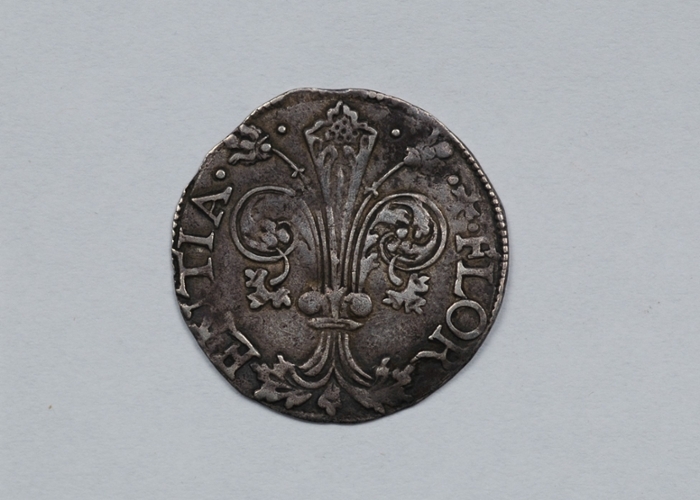
Silver Grosso of Florence
2003.1.241
Republic of Florence, 1510 CE
Fleur-de-lis/John the Baptist
1.84 g; 23.2 mm (grosso of 7 soldi)This coin can be dated by the mint master's mark on the reverse, to the left of St. John's head. It is attributed to Raniero di Giovanni Quaratesi, one of the mint masters in 1510. At the time this coin was struck, Niccolò Machiavelli was serving as an elected official and diplomat, and the Medici family had been temporarily removed from power.
The design of this coin would have been familiar throughout Renaissance Europe due to the widespread use of gold standard-weight Florentine coins - "fiorino d'oro," or gold florins - in banking and trade.
-
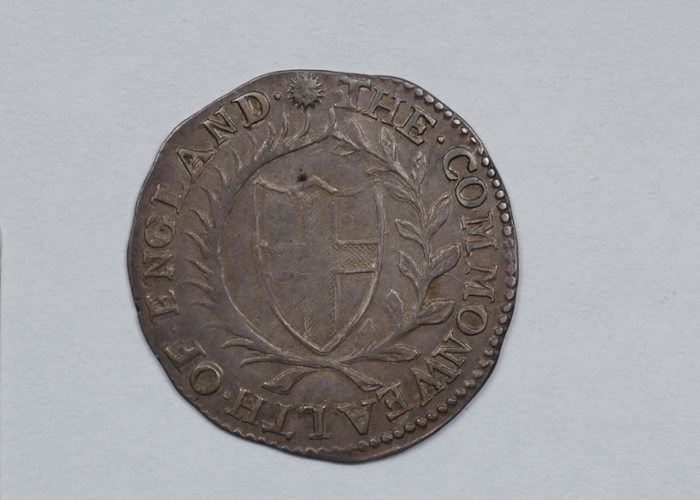
Silver Commonwealth Sixpence
2003.1.237
Commonwealth of England, 1651 CE
Shield of St. George/Shields of St. George and Ireland
2.98 g; 27.3 mmThe imagery on this sixpence is found on all denominations of coinage minted during the Commonwealth period (1649-1660). Following the English Civil War and the beheading of Charles I, the monarch's image was replaced with simple shields representing England and Ireland, deemed more fitting for Oliver Cromwell's puritan republic.
The coinage was jokingly referred to as "breeches money," because the conjoined shields looked like a puffed up pair of knee-length men's trousers.